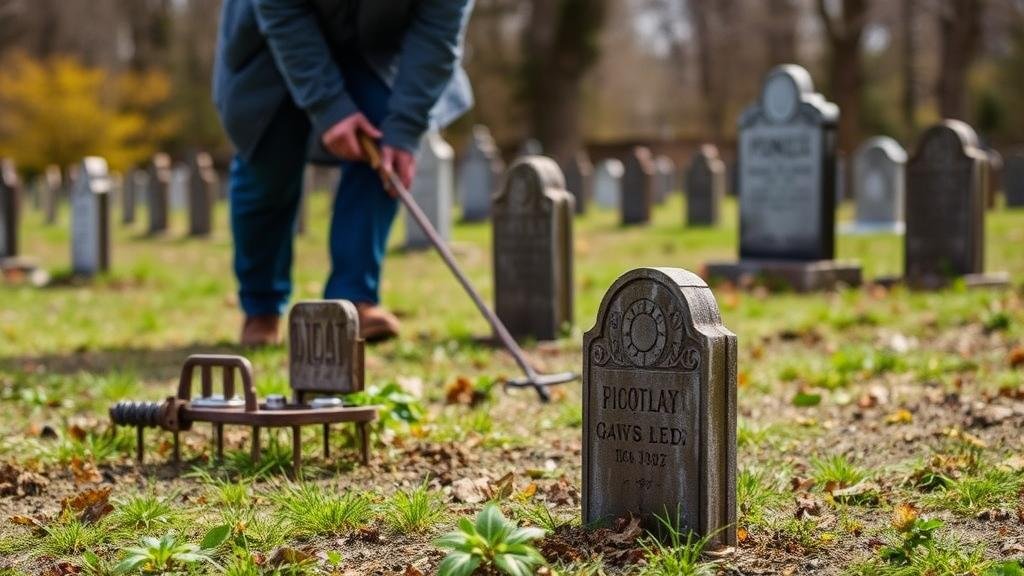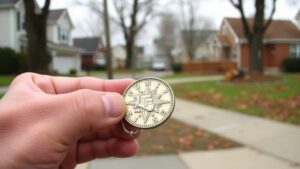Metal Detecting in Pioneer Graveyards: Unearthing History Respectfully
Metal Detecting in Pioneer Graveyards: Unearthing History Respectfully
Metal detecting is a popular hobby that has attracted enthusiasts interested in uncovering historical artifacts, including those found in pioneer graveyards. While the practice can serve as a means of preserving history, it also raises ethical questions concerning respect for the deceased and their burial sites. This article will explore the significance of metal detecting in pioneer graveyards, outline ethical guidelines, and present practical methods for conducting this hobby respectfully.
The Historical Significance of Pioneer Graveyards
Pioneer graveyards serve as vital links to our past, housing the remains and possessions of early settlers and indigenous peoples. Each grave and artifact can provide insights into historical events, social structures, and cultural practices. As the United States expanded westward during the 18th and 19th centuries, graveyards became repositories of personal stories and communal memories. According to the National Park Service, over 80% of graveyards in the U.S. have not been surveyed systematically, indicating a rich field for investigation.
Artifacts and Their Stories
Artifacts found in pioneer graveyards often carry significant historical value. Common items include:
- Grave markers and headstones
- Personal items such as jewelry, buttons, and coins
- Military insignia and other commemorative artifacts
For example, a 2017 study discovered a trove of Civil War-era artifacts in a graveyard in Virginia, shedding light on the lives of soldiers and community interactions during that tumultuous period. Such finds can lead to narratives that enhance our understanding of the past.
Ethical Considerations in Metal Detecting
Engaging in metal detecting within pioneer graveyards necessitates a firm commitment to ethical practices. This responsibility is crucial to upholding the dignity of the deceased and their descendants. The following guidelines should be adhered to:
Guideline 1: Seek Permission
Obtaining permission is paramount before conducting any metal detecting. This typically involves contacting local authorities or cemetery associations that oversee the graveyards management. In the absence of explicit permission, one should refrain from conducting searches. This respect for property rights and community norms fosters good relationships with both authorities and fellow hobbyists.
Guideline 2: Respect the Sanctity of Burial Sites
Metal detecting should avoid active graves and disturbed areas. Only search around established paths and avoid unmarked graves, as digging can be seen as desecrating the resting place of the deceased. American Society of Metal Detecting & Archaeology (ASMD&A) emphasizes that honor and preservation of burial sites must come before any potential finds.
Guideline 3: Report Significant Discoveries
Artifacts uncovered that have historical significance should be reported to local heritage organizations or museums. This commitment ensures that items are preserved and interpreted correctly. For example, when a metal detecting enthusiast in Ohio discovered a rare Civil War commemorative medal in a local graveyard, they contacted a museum which subsequently exhibited the find and shared its historical context.
Techniques for Responsible Metal Detecting
Responsible metal detecting involves the application of specific methods and technologies that minimize harm to grave sites while maximizing the potential for educational gain.
Using the Right Tools
Investing in high-quality metal detectors equipped with discrimination features can enhance the search experience. Discrimination allows users to filter out unwanted signals, minimizing the need for extensive digging. Also, using a pinpointer can streamline the retrieval process and reduce disturbance to the surrounding area.
Documenting Findings
Keeping a detailed record of finds, including location data and artifact descriptions, can contribute to local historical records. Developing a site map and photographing artifacts helps create a visual context important for education and further research.
Conclusion: A Respectful Pursuit of History
Metal detecting in pioneer graveyards can offer rewarding experiences for those passionate about history, but it inherently comes with responsibilities. Through obtaining permission, following ethical guidelines, and utilizing appropriate techniques, hobbyists can unearth artifacts while honoring the memories of those who came before us. The dedication to respectful practices not only enhances the reputation of the metal detecting community but also helps preserve history for future generations. As you embark on this fulfilling adventure, remember to keep history alive with the utmost respect and sensitivity.
Actionable Takeaways
- Always seek permission before conducting metal detecting in graveyards.
- Respect the sanctity of burial sites by avoiding active graves and marked areas.
- Document findings meticulously and report significant discoveries to local authorities or museums.



